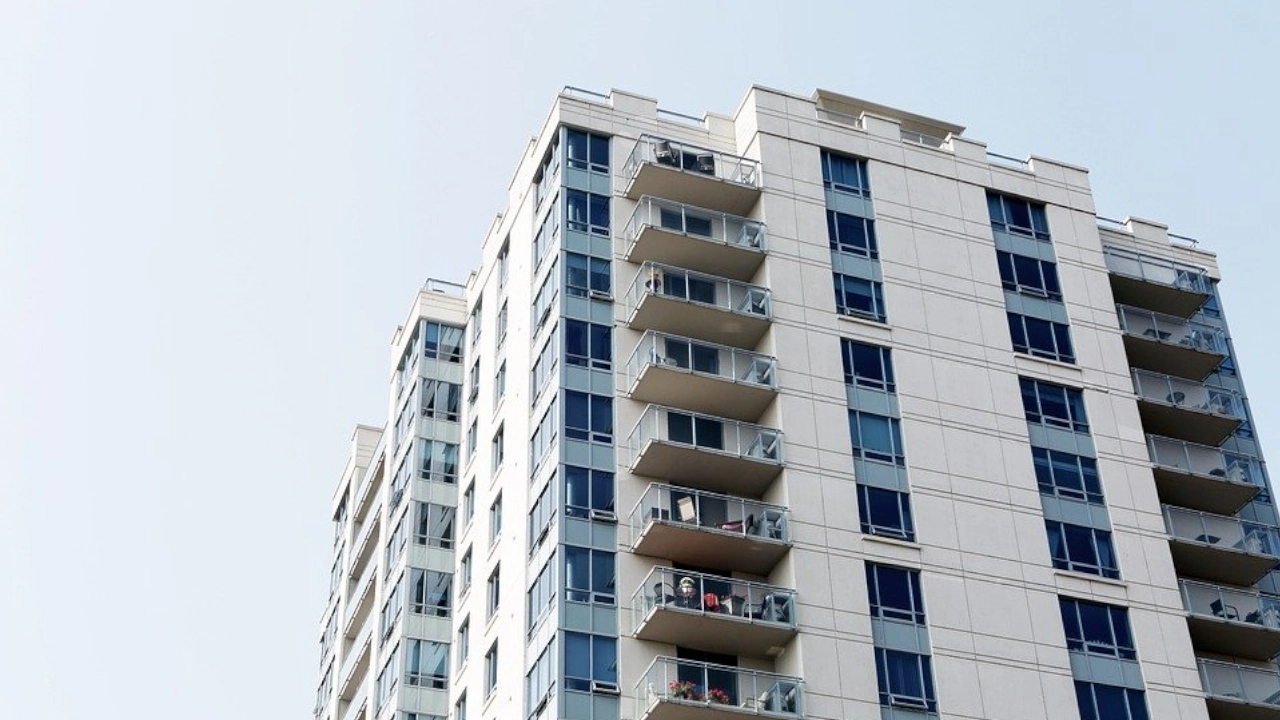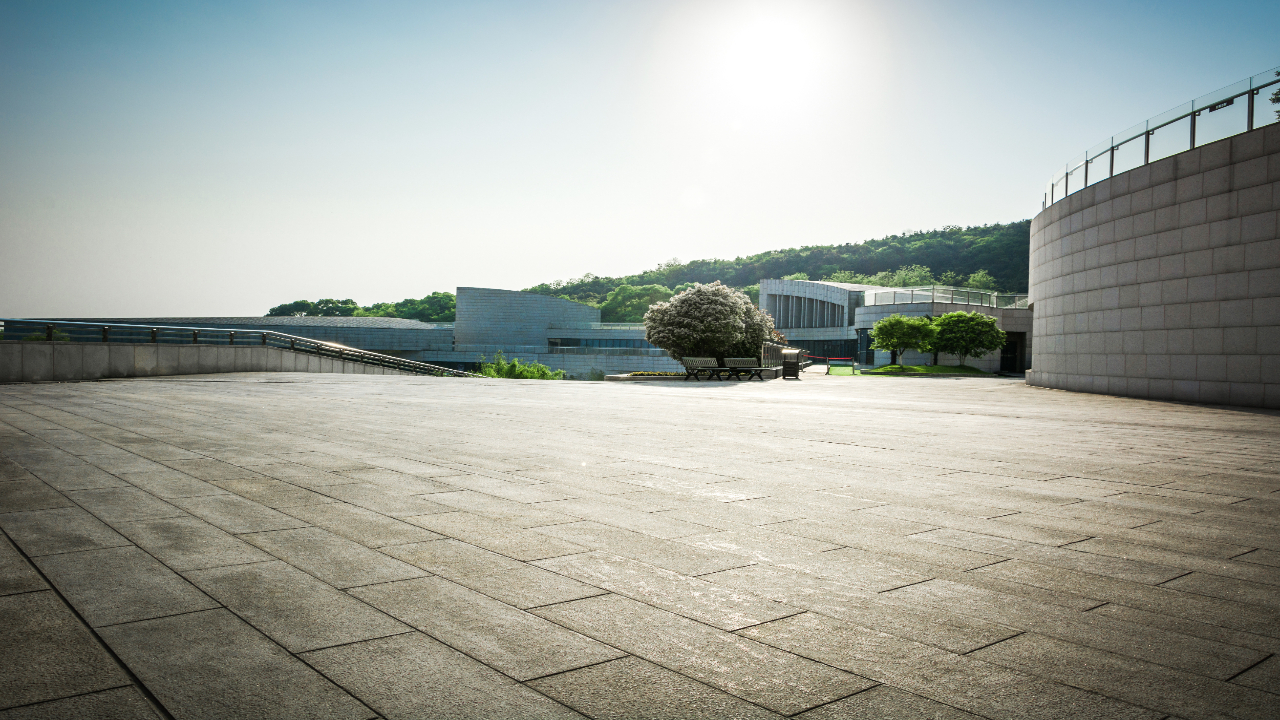
How to Resurface a Concrete Patio? (A Step-by-Step Guide)
John Souffront

Has the concrete patio outside your property lost its shine? Is the dull and cracked appearance making your property less appealing? If you’re facing this problem, this guide is for you. Today, we’ll learn how to resurface a concrete patio and make it aesthetically appealing and sturdy. The resurfacing process can turn it into a stunning and functional area, whether it’s cracked, stained, or general wear and tear.
Let’s get started.
How to Resurface a Concrete Patio?
Clean the Concrete
The first step to revamping your concrete patio is a thorough cleaning. You would need a pressure washer for this. But before using it, choose a 25-degree fan tip attachment and maintain a safe distance of 6-8 inches from the surface. This focused stream effectively removes dirt, grime, and stubborn rust stains.
As the water washes away years of buildup, look for loose or flaking concrete. These areas might require more TLC (or tender loving care). For minor issues, a wire brush or putty knife can help remove problematic patches. However, consider calling a professional for repairs if the damage is extensive or involves large, crumbling sections.
Repair/Fix Any Cracks in the Concrete
Once you have cleaned the concrete, it’s time to tackle any cracks, holes, or uneven surfaces.
After the concrete dries completely, select a patching material suitable for the size and depth of the imperfections. A pre-mixed concrete patching compound is user-friendly for minor cracks and shallow pits. Apply it with a trowel or putty knife, ensuring a smooth and level finish that matches the surrounding concrete as closely as possible.
You might need a cementitious patching material that requires mixing with water for larger or deeper gaps. Always follow the manufacturer’s instructions for proper mixing ratios and application techniques. Remember, a strong bond is essential, so ensure good adhesion between the patch and the existing concrete.
Use a Bonding Agent
This step is crucial for projects involving cement-based overlay materials like stamped concrete or micro-topping. It acts as a bridge, creating a stronger bond between the existing concrete and the new overlay.
After your patches have completely cured (refer to the manufacturer’s recommended drying time), it’s time to apply the bonding agent. Many of these products contain latex or polymers, which enhance the adhesive properties, ensuring the overlay adheres seamlessly to the concrete base.
There are several ways to apply the bonding agent, with rolling being the most common method. For optimal coverage, use a roller with a ⅜-inch nap. Remember to pay close attention to the manufacturer’s instructions. Some bonding agents require a specific tackiness before applying the overlay, so timing is key.
Mix the Materials
If applying a stamped overlay or micro-topping, carefully review the manufacturer’s instructions on the product packaging. This is crucial as the specific chemical makeup of the overlay material may dictate a limited working time before it hardens, making further adjustments difficult without causing damage or compromising its integrity.
The typical process involves:
- Emptying a bag of dry overlay mix into a seven-gallon bucket.
- Measure and add the specified amount of water.
- Potentially incorporating additional additives like liquid or powdered pigments for coloration.
Thorough mixing is essential, often achieved using a power drill equipped with a mixing paddle attachment. Adhere to the mixing guidelines provided on the packaging to avoid introducing air bubbles into the mixture. Trapped air can alter the chemical reaction and create voids within the overlay, potentially weakening the final product’s sturdiness.
Apply the Material
There are two options that you could use.
- Option 1: Cement Overlay
- Prepare the base: Ensure your patio is clean and ready for the new layer.
- Pour and spread: The cement mix is your star here. Pour it directly onto the patio and use a trowel for even distribution. Think thin layer, around ¼ to ⅜ inch thick.
- Smooth finish: Work the surface to achieve a level and polished result.
- Option 2: Stain or Epoxy Paint
- Read the manual: Each stain or paint has specific instructions. Follow them closely for the best outcome.
- Roller or sprayer: Choose your application tool based on the product and your preference.
- Watch the weather: Hot and windy conditions can dry the stain or paint quickly. Work in manageable sections to avoid unevenness, ensuring a seamless final look.
Important tip: Existing cracks or control joints in your patio may need attention. Whether you’re using an overlay or a coating, ensure these lines are continued through the new surface to prevent future cracking.
Apply the Finish to the Cement Overlay Material
The finishing process is delicate, as mistakes during this phase can leave permanent marks on the rapidly hardening cement surface. Accidental scratches from tools or debris, like leaves or sticks, falling onto the wet cement are common mishaps. You must know how to rectify these minor accidents, which tend to occur at the most inconvenient moments.
For those applying a cement overlay, this stage is where creativity comes into play. Stamping patterns into the cement or employing techniques like brooming or swirl troweling adds texture and visual appeal. These textures not only enhance the aesthetics but also improve safety by providing better traction. This stage demands experience and skill, so if you lack the necessary knowledge, it’s best to hire a professional. They can save you time and energy and ensure an amazing final result.
Apply the Sealer
After the cement overlay or stain/epoxy paint has fully cured, typically within 24-48 hours, it’s time to protect your hard work with a sealer. This critical step safeguards the new surface from stains, UV damage, and premature wear. Choose a sealer suitable for exterior concrete patios, such as an acrylic or polyurethane-based product. Read the manufacturer’s instructions carefully and follow the recommended application method – rolling, spraying, or using a squeegee.
Apply the sealer in thin, even coats, allowing each coat to dry completely before applying the next. Depending on the product and the desired level of protection, you may need two or three coats. During application, ensure adequate ventilation and wear protective gear like gloves and a respirator mask. Avoid applying the sealer in direct sunlight or extreme temperatures, as this can affect its performance.
Once the sealer has fully cured, typically within 24-48 hours, your resurfaced concrete patio is ready to withstand the elements and foot traffic, providing you with a beautiful and long-lasting outdoor living space.
Conclusion
That was a 7-step process on how to resurface a concrete patio. Follow these steps properly to transform your patio into a stunning and functional area. And if the process, as a whole, seems too much for you to handle, or if you’re not experienced enough to carry out the steps, feel free to reach out to our team at Souffront Construction & Engineering. Our concrete restoration contractors have about two decades of experience in concrete restoration and repair.
We know which material to use, what steps to follow, their pros and cons, and the external factors that may impact the process. Once you call us for help, we ensure that we provide you with the finished product, i.e., a durable and aesthetically appealing concrete patio. Feel free to reach out to us via our contact page; someone from our team should contact you soon.
Have you read: How Long Does Concrete Resurfacing Last?
Frequently Asked Questions
What is the best concrete patio coating?
Stamped concrete overlays are considered one of the best options for concrete patio coatings. They add color, pattern, and texture to your patio, enhancing its durability and strength. These overlays provide a decorative and long-lasting finish that can resemble natural materials like stone or brick.
What are the different types of patio finishes for existing concrete?
There are various patio finishes available for existing concrete surfaces, including colors (earth tones), patterns (stamped designs resembling wood or stone), stencils (for logos and graphics), and borders (contrasting colors or patterns). These finishes can dramatically transform the appearance of an existing patio while adding decorative elements.
What is the cost of resurfacing a concrete patio?
The cost to resurface a concrete patio can vary significantly depending on factors such as the size of the patio, the chosen resurfacing material, and labor costs in your area. On average, expect to pay between $3 to $5 per square foot for basic resurfacing projects.
What are the benefits of resurfacing a concrete patio?
Resurfacing a concrete patio offers several benefits, including improved aesthetic appeal, increased durability and longevity, protection from weather and wear, and the ability to customize the surface with various colors, textures, and patterns. It can also enhance the overall value of your property.
What are the steps for resurfacing a concrete patio?
The steps for resurfacing a concrete patio typically involve cleaning and preparing the existing surface, repairing any cracks or damage, applying a bonding agent or primer, applying the chosen resurfacing material (such as an overlay or micro-toppings), and finally sealing the surface for protection.
Some Resources That Might Come in Handy
- How to Restore Faded Stamped Concrete? (Explained)
- Top Concrete Crack Repair Methods You Must Know Of
- The Ultimate Guide to Concrete Restoration Process and Methods
- Concrete Spalling: Cause, Prevention Measures, Repair & More
- Concrete Coring Procedure: All You Need To Know
John Souffront
John Souffront is a seasoned leader in the construction and engineering industry, with over a decade of experience at the helm of Souffront Construction & Engineering. Known for his unwavering commitment to excellence and innovation, John has propelled his firm to the forefront of the field, delivering cutting-edge solutions for complex projects around the country.
Build Your Project
Ensure safety and compliance on your construction site with our experienced team. Call us today.
Contact Us
